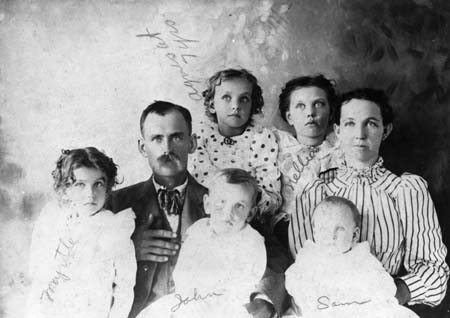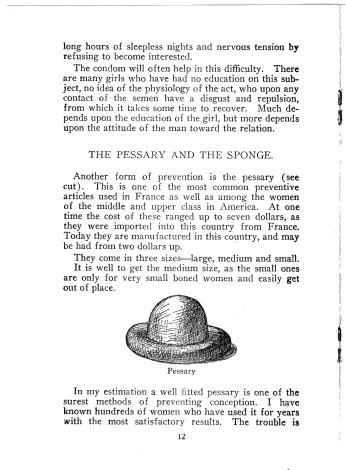|
Agnes Smedley
Agnes Smedley (February 23, 1892 – May 6, 1950) was an American journalist, writer, and activist who supported the Indian Independence Movement and the Chinese Communist Revolution. Raised in a poverty-stricken miner's family in Missouri and Colorado, she dramatized the formation of her feminist and socialist consciousness in the autobiographical novel ''Daughter of Earth'' (1929). As a college student during World War I, she organized support for the independence of India from the United Kingdom, receiving financial support from the government of Germany. After the war she went to Germany, where she met and worked with Indian nationalists. Between 1928 and 1941, she lived and worked in China, mainly as a journalist. During the first phase of the Chinese Civil War, she was based in Shanghai and published widely in support of the communist cause; later, during the Second Sino-Japanese War, she traveled with the Eighth Route Army and lived for a time in the communist base in Yan'a ... [...More Info...] [...Related Items...] OR: [Wikipedia] [Google] [Baidu] |
Osgood, Missouri
Osgood is a village in western Sullivan County, Missouri, United States. The population was 24 at the 2020 census. History Osgood was platted in 1886. and most likely named after a railroad man. A post office called Osgood was established in 1888, and remained in operation until 1965. Geography Osgood is located in western Sullivan County on Missouri Route 139 just west of Medicine Creek. Milan is 13 miles to the east along Missouri Route PP. Harris and Humphreys lie to the north and south respectively along Route 139. The Chicago, Milwaukee, St. Paul and Pacific Railroad passes the east side of the location.''Osgood, MO,'' 7.5 Minute Topographic Quadrangle, USGS, 1984 According to the United States Census Bureau, the village has a total area of , all land. Demographics 2010 census As of the census of 2010, there were 48 people, 19 households, and 11 families living in the village. The population density was . There were 31 housing units at an average density of . The racial ... [...More Info...] [...Related Items...] OR: [Wikipedia] [Google] [Baidu] |
Trinidad, Colorado
Trinidad is the home rule municipality that is the county seat and the most populous municipality of Las Animas County, Colorado, United States. The population was 8,329 as of the 2020 census. Trinidad lies north of Raton, New Mexico, and south of Denver. It is on the historic Santa Fe Trail. History Early Trinidad was first explored by Spanish and Mexican traders, who liked its proximity to the Santa Fe Trail. It was founded in 1862 soon after coal was discovered in the region. This led to an influx of immigrants eager to capitalize on this natural resource. By the late 1860s, the town had about 1,200 residents. Trinidad was officially incorporated in 1876, just a few months before Colorado became a state. In 1878 the Atchison, Topeka and Santa Fe Railway reached Trinidad, making it easier for goods to be shipped from distant locations. In the 1880s Trinidad became home to a number of well-known people, including Bat Masterson, who briefly served as the town's marshal in 1 ... [...More Info...] [...Related Items...] OR: [Wikipedia] [Google] [Baidu] |
Autobiographical Novel
An autobiographical novel is a form of novel using autofiction techniques, or the merging of autobiographical and fictive elements. The literary technique is distinguished from an autobiography or memoir by the stipulation of being fiction. Because an autobiographical novel is partially fiction, the author does not ask the reader to expect the text to fulfill the "autobiographical pact".Philippe Lejeune"Autobiographical Pact," pg. 19 Names and locations are often changed and events are recreated to make them more dramatic but the story still bears a close resemblance to that of the author's life. While the events of the author's life are recounted, there is no pretense of exact truth. Events may be exaggerated or altered for artistic or thematic purposes. Novels that portray settings and/or situations with which the author is familiar are not necessarily autobiographical. Neither are novels that include aspects drawn from the author's life as minor plot details. To be consid ... [...More Info...] [...Related Items...] OR: [Wikipedia] [Google] [Baidu] |
Hindu–German Conspiracy Trial
The Hindu–German Conspiracy Trial commenced in the District Court in San Francisco on November 12, 1917, following the uncovering of the :Hindu–German Conspiracy (also known as the Indo German plot) for initiating a revolt in India. It was part of a wave of such incidents which took place in the United States after America's entrance into World War I. In May 1917, eight Indian nationalists of the Ghadar Party were indicted by a federal grand jury on a charge of conspiracy to form a military enterprise against the United Kingdom. The trial lasted from November 20, 1917, to April 24, 1918. The British authorities hoped that the conviction of the Indians would result in their deportation from the United States back to India. However, strong public support in favor of the Indians meant that the U.S. Department of Justice chose not to do so. Background From 1915 to 1917, the British government repeatedly requested that the United States government suppress the activities of Ghad ... [...More Info...] [...Related Items...] OR: [Wikipedia] [Google] [Baidu] |
Hindu–German Conspiracy
The Indo–German Conspiracy (Note on the name) was a series of attempts between 1914 and 1917 by Indian nationalist groups to create a Pan-Indian rebellion against the British Empire during World War I. This rebellion was formulated between the Indian revolutionary underground and exiled or self-exiled nationalists in the United States. It also involved the Ghadar Party, and in Germany the Indian independence committee in the decade preceding the Great War. The conspiracy began at the start of the war, with extensive support from the German Foreign Office, the German consulate in San Francisco, and some support from Ottoman Turkey and the Irish republican movement. The most prominent plan attempted to foment unrest and trigger a Pan-Indian mutiny in the British Indian Army from Punjab to Singapore. It was to be executed in February 1915, and overthrow British rule in the Indian subcontinent. The February mutiny was ultimately thwarted when British intelligence infiltrat ... [...More Info...] [...Related Items...] OR: [Wikipedia] [Google] [Baidu] |
Margaret Sanger
Margaret Higgins Sanger (born Margaret Louise Higgins; September 14, 1879September 6, 1966), also known as Margaret Sanger Slee, was an American birth control activist, sex educator, writer, and nurse. Sanger popularized the term "birth control", opened the first birth control clinic in the United States, and established organizations that evolved into the Planned Parenthood Federation of America. Sanger used her writings and speeches primarily to promote her way of thinking. She was prosecuted for her book ''Family Limitation'' under the Comstock Act in 1914. She feared the consequences of her writings, so she fled to Britain until public opinion had quieted. Sanger's efforts contributed to several judicial cases that helped legalize contraception in the United States. Due to her connection with Planned Parenthood, Sanger is frequently criticized by opponents of abortion. However, Sanger drew a sharp distinction between birth control and abortion and was opposed to abortions th ... [...More Info...] [...Related Items...] OR: [Wikipedia] [Google] [Baidu] |
Henrietta Rodman
Henrietta Rodman (August 29, 1877 – March 21, 1923) was an American educator and feminist. She was active in advocating on behalf of married women teachers for their right to promotion and maternity leave. Early life and education Rodman was born in Astoria, New York, the daughter of Rev. Washington Rodman and Henrietta Blackwell Rodman. Her father was a Protestant Episcopal clergyman in West Farms, Bronx, and founder of St. Barnabas Hospital in the Bronx. She was a 1904 graduate of Teachers College, Columbia University. Career Rodman taught English and was a vocational counselor at Wadleigh High School for Girls in New York City. Opposed to the school board's restrictive policies on married women teachers, she married a psychologist friend, Herman de Fremery (a.k.a. Herman Defrem), in February 1913, and announced it to the press, saying, "If the married state affects a woman's work, the authorities can mark her accordingly. If it does not affect her work, and if she is ... [...More Info...] [...Related Items...] OR: [Wikipedia] [Google] [Baidu] |
Socialism
Socialism is a left-wing economic philosophy and movement encompassing a range of economic systems characterized by the dominance of social ownership of the means of production as opposed to private ownership. As a term, it describes the economic, political and social theories and movements associated with the implementation of such systems. Social ownership can be state/public, community, collective, cooperative, or employee. While no single definition encapsulates the many types of socialism, social ownership is the one common element. Different types of socialism vary based on the role of markets and planning in resource allocation, on the structure of management in organizations, and from below or from above approaches, with some socialists favouring a party, state, or technocratic-driven approach. Socialists disagree on whether government, particularly existing government, is the correct vehicle for change. Socialist systems are divided into non-market and market f ... [...More Info...] [...Related Items...] OR: [Wikipedia] [Google] [Baidu] |
Socialist Party Of America
The Socialist Party of America (SPA) was a socialist political party in the United States formed in 1901 by a merger between the three-year-old Social Democratic Party of America and disaffected elements of the Socialist Labor Party of America who had split from the main organization in 1899. In the first decades of the 20th century, it drew significant support from many different groups, including trade unionists, progressive social reformers, populist farmers and immigrants. But it refused to form coalitions with other parties, or even to allow its members to vote for other parties. Eugene V. Debs twice won over 900,000 votes in presidential elections ( 1912 and 1920) while the party also elected two U.S. representatives ( Victor L. Berger and Meyer London), dozens of state legislators, more than 100 mayors, and countless lesser officials. The party's staunch opposition to American involvement in World War I, although welcomed by many, also led to prominent defections, ... [...More Info...] [...Related Items...] OR: [Wikipedia] [Google] [Baidu] |





.jpg)
